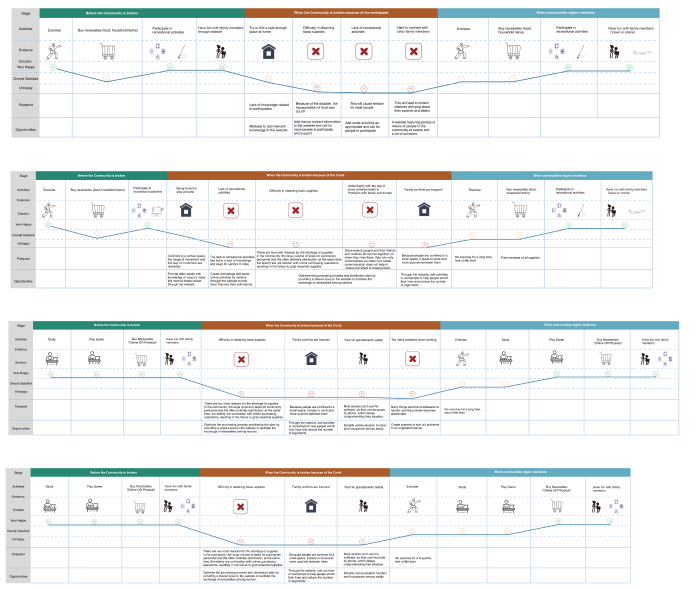DESIGNER
Xuhui Zhang
KEYWORD
#Service design
#Community Resilience
#older adults
#Activities of daily living (ADL)
#Self-efficacy
ADVISOR
Bolor Amgalan
The aging population, driven by urbanization, low birth rates, and
increasing life expectancy, has become a pressing global issue.
However, developing countries face more complex challenges, including
inadequate health care and resources, necessitating the development of
new community models to meet the needs of old adults and improve their
quality of life. To address the issue, this research proposes a new
community model designed to foster community resilience that will
enable old adults to access essential products as well as share their
life experiences, abilities, and knowledge with the community through
workshops. The latter will enhance old adults’ influence in the
community, affirm their values, and promote intergenerational
interaction and support. This approach can benefit all stakeholders
and include elements to assist with activities of daily living
(ADLs). At the core of this approach is integrating offline
communities with online communities through websites to enhance
community resilience. The online component is a window to the offline
feature, where some of the community's resources and support can be
accessed through the online website.
Why I chose this topic
According to the survey, Chinese older adults’ population reached
0.264 billion (above 60 years old) in 2020, accounting for 18.70% of
the total Chinese population; The country has 0.19 billion older
adults aged 65 and above, accounting for 13.50% of the total
population, and because of the one-child policy in China, the
proportion of empty nesters in China's older adults’ population could
reach 90% by 2030.
The Chinese one-child policy is the primary cause of the decrease in
the fertility rate. The one-child policy, a formal initiative launched
by the Chinese central government in the late 1970s and early 1980s,
aimed to limit the vast majority of family groups in the nation to
having just one child each.
Community resilience is crucial in an aging society because older
people are more susceptible to the effects of disasters and social
problems.
Territory Map

The territory map demonstrates how the website operates, with a
primary focus on creating a virtual community that provides a platform
for problem-solving, particularly for older adults.
Website Framework

The platform is divided into three sections, with the first focusing
on community descriptions and news, while the second - the services
section - allows users to participate in activities and search for
information in various media. The marketplace function enables users
to trade products and add them to their accounts. The "Personal
Account" section provides access to personal details, links to
acquaintances and family members, and information about recent
activities.
System Map

The system map shows the relationships among the platform's users,
which include community volunteers, workers, residents (including
older adults), and others interested in the community. The platform
enables users to exchange information and materials efficiently, earn
credits by organizing workshops or activities, and redeem those
credits for other activities.
Persona

The system map shows the relationships among the platform's users,
which include community volunteers, workers, residents (including
older adults), and others interested in the community. The platform
enables users to exchange information and materials efficiently, earn
credits by organizing workshops or activities, and redeem those
credits for other activities.
Journey Map -
Before use this website

These Journey maps that outline their experiences during three
distinct periods:
1. when the community was functioning normally
2. when the community faced disruptions
3. when the community resumed normal operations
The journey map also highlights the various challenges users
encountered during each period and offers potential solutions to
address these points.
Journey Map -
After use this website

The journey maps serve as a blueprint that illustrates how the
platform is used by different identities throughout the day,
highlighting its relevance to their daily activities. They demonstrate
how users participate in the online community to enhance community
resilience.
Demo Video





